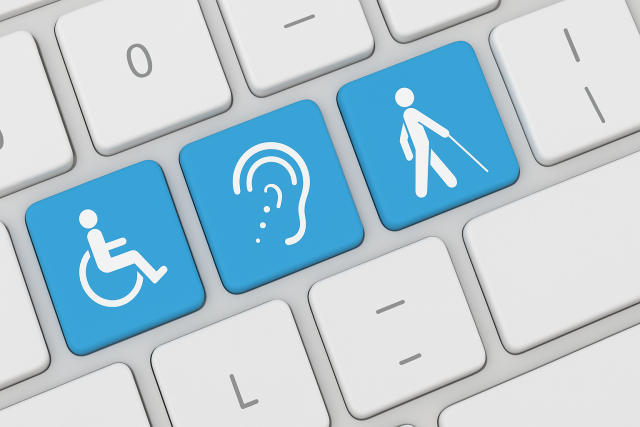Do you want your website, app, or other digital product to be usable by everyone?
Then digital accessibility is essential. By paying attention to it, you not only ensure that people with disabilities can easily use your platform, but you also improve overall usability and readability.
In this blog, we explain what digital accessibility entails, the rules and guidelines that apply (such as the WCAG), and how companies and public organizations must comply with them.
What is digital accessibility?
Digital accessibility, or e-accessibility, means that websites, apps, and other digital services are designed in a way that makes them usable for everyone – including people with visual, auditory, motor, or cognitive disabilities.
This includes, for example:
✅ Clear and understandable texts, even for people with reading difficulties or those who have Dutch as a second language.
✅ Subtitles for videos, allowing deaf and hard-of-hearing users to follow the content.
✅ Large buttons and simple navigation, which assist users with visual impairments or motor challenges.
✅ Alternative text for images, enabling screen readers to describe the content.
Accessibility in government
For government agencies, digital accessibility is not just desirable—it’s mandatory. The Digital Government Act (Wdo) imposes requirements on websites and apps of (semi-)governmental bodies, which are defined in the Decree on Digital Accessibility of the Government.
This legislation is based on the European standard EN 301 549, known in the Netherlands as Digitoegankelijkheid. It outlines accessibility requirements, which in turn refer to the Web Content Accessibility Guidelines (WCAG).
Accessibility in the business sector
Digital accessibility is also becoming increasingly important for businesses, especially with the introduction of the European Accessibility Act (EAA). This European directive, which must be transposed into national law by June 2025, obliges businesses to make their digital products and services accessible to people with disabilities. This includes websites, mobile apps, e-commerce platforms, electronic communications, and even payment terminals.
For many organizations, this means that accessibility is no longer a voluntary effort but a legal requirement. Companies are well-advised to take timely measures to comply with these new regulations, both to avoid fines and to offer inclusive services to a wider audience.
What is WCAG?
The WCAG guidelines are international standards that define digital accessibility. They consist of three levels:
Level A – Basic requirements for minimal accessibility.
Level AA – The most common standard, offering a good balance between accessibility and feasibility.
Level AAA – The strictest requirements for maximum accessibility.
WCAG is updated regularly. The latest version, WCAG 2.2, was published on October 5, 2023, building on WCAG 2.1.
The 4 principles of WCAG
WCAG is based on four core principles:
Perceivable – Information and interface elements must be visible and audible, including for users who rely on assistive technologies such as screen readers.
Operable – Everyone must be able to interact with the interface easily, regardless of physical or motor impairments.
Understandable – The content must be logical and clear, so users don’t struggle with navigation or language.
Robust – Digital content must function properly across various devices and be compatible with technologies like speech software.
Want to learn more about how to implement digital accessibility and what it means for your website or app?
Check out our blog on the four principles of WCAG.
